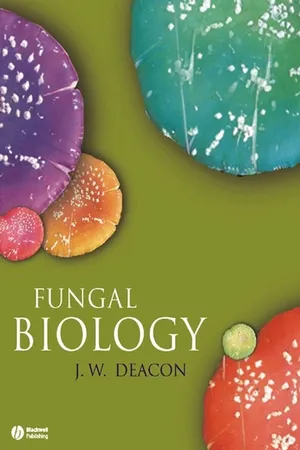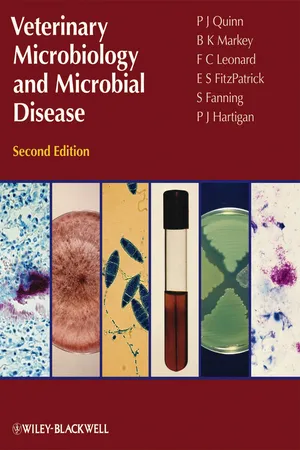Biological Sciences
Ascomycota
Ascomycota is a phylum of fungi characterized by the production of sexual spores within a sac-like structure called an ascus. This diverse group includes many important plant pathogens, as well as edible fungi like morels and truffles. Ascomycota play crucial roles in ecosystems as decomposers, symbionts, and pathogens, and have significant economic and ecological impacts.
Written by Perlego with AI-assistance
Related key terms
3 Key excerpts on "Ascomycota"
- eBook - ePub
- Joseph Heitman, Barbara J. Howlett, Pedro W. Crous, Eva H. Stukenbrock, Timothy Yong James, Neil A. R. Gow(Authors)
- 2017(Publication Date)
- ASM Press(Publisher)
6 Fungal Sex: The AscomycotaRichard J. Bennett1 and B. Gillian Turgeon2PHYLOGENY OF THE ASCOMYCETES
There are ∼64,000 known species within the Ascomycota , making it the largest phylum of Fungi. Major subphyla include the Taphrinomycotina (e.g., Schizosaccharomyces pombe ), the Saccharomycotina (including Candida and Saccharomyces clades), and the Pezizomycotina (the largest subphylum, which includes the Eurotiomycetes , Dothideomycetes , Sordariomycetes , and Leotiomycetes ) (see Fig. 1 ). Most Saccharomycotina grow as budding yeast or are dimorphic (can grow as yeast or filaments), whereas most Pezizomycotina are predominantly filamentous, although some are also dimorphic.Figure 1 Phylogenetic relationships of major groups of fungi. Synthesis from references 280 –282 . Numbers at the nodes indicate estimated age, in millions of years, at which an ancestral group arose. Abbreviations: An, Aspergillus nidulans ; Ca, Candida albicans ; Ch, Cochliobolus heterostrophus ; Fg, Fusarium graminearum ; Pa, Podospora anserina ; Nc, Neurospora crassa ; Sc, Saccharomyces cerevisiae ; Sp, Schizosaccharomyces pombe . Numbers in parentheses indicate the approximate age of that group in millions of years.SEX IN THE MODEL YEASTS
Sexual reproduction is thought to have evolved early in the eukaryotic lineage and to have been retained by the majority of extant species. The unicellular yeasts Saccharomyces cerevisiae and S. pombe have been invaluable in defining fundamental aspects of sexual reproduction, as well as addressing the benefits of sex for adaptive evolution (1 , 2 ). Despite often being grouped together, S. cerevisiae (a budding yeast) and S. pombe (a fission yeast) last shared a common ancestor more than 330 million years ago (3 ). The Schizosaccharomyces genus forms a deep branch from the base of the Ascomycota tree (the Taphrinomycotina ) and is considered to be representative of “ancient” ascomycetes (4 ) (Fig. 1 ). S. cerevisiae has undergone faster evolution than S. pombe since their split from a common ancestor, so that the latter may display attributes closer to the common roots of fungi and animals (4 ). The two yeasts exhibit both similarities and important differences in mating (gamete fusion) and meiosis (gametogenesis). Mating in these species involves pheromone-based communication and fusion between cells of opposite mating types. In S. cerevisiae , signaling between a and α cell types leads to the formation of diploid a /α cells, whereas in S. pombe , mating of P (plus or h+) and M (minus or h–) cells generates diploid P/M (h+/h–) cells (Fig. 2 - eBook - ePub
- J. W. Deacon(Author)
- 2013(Publication Date)
- Wiley-Blackwell(Publisher)
These fungal infections can develop rapidly by spread through the arteries and invasion of the surrounding tissues. They often require surgical excision of the affected areas. Even so, the prognosis is poor – the overall mortality rate is about 50% and can rise to 85% in patients with the rhino-cerebral form of the disease. The zygomycoses fall clearly into the category of opportunistic infections, because they are associated with impaired host defenses. They are among the most difficult infections to control because of their rapid, invasive growth.Ascomycota
The phylum Ascomycota contains about 75% of all the fungi that have been described to date. It is not only the most important phylum, but also the most diverse, and many of the relationships within this group have yet to be resolved by modern molecular methods. The one feature that characterizes all members of this phylum is the ascus – a cell in which two compatible haploid nuclei of different mating types come together and fuse to form a diploid nucleus, followed by meiosis to produce haploid sexual spores, termed ascospores. In many species the meiotic division is followed by a single round of mitosis, leading to the production of eight ascospores within each ascus (Fig. 2.13 ). In the more advanced members of the group, many asci are produced within a fruiting body, termed an ascocarp. This can take various forms – a flask-shaped perithecium with a pore at its tip, a cup-shaped apothecium, a closed structure that breaks down at maturity, termed a cleistothecium, or a pseudothecium which is usually embedded in a pad of tissue, termed a stroma. In other cases, the asci are produced singly and are not enclosed in a fruiting body – for example, this is true for the budding yeast Saccharomyces cerevisiae (which produces only 4 ascospores in a naked ascus) and the fission yeast Schizosaccharomyces octosporus (eight-spored asci). Several of these points are illustrated in Figs. 2.13 –2.15 .Like many members of the Ascomycota, N. crassa , has a sexual stage, leading to the production of asci containing ascospores. N. crassa is heterothallic, requiring strains of different mating types (termed A and a) for sexual development. The female sex organ, termed an ascogonium, is often a coiled, multinucleate hypha with a receptive trichogyne. It is fertilized either by contact with a spermatium (a small uninucleate cell that cannot germinate) or by a conidium. Then the ascogonium produces an ascogenous hypha that will eventually give rise to the asci. The process by which this happens is shown in Fig. 2.16 - eBook - ePub
- P. J. Quinn, B. K. Markey, F. C. Leonard, P. Hartigan, S. Fanning, E. S. Fitzpatrick(Authors)
- 2011(Publication Date)
- Wiley-Blackwell(Publisher)
Mucormycotina in the future as the term is still in use.Key points- Eukaryotic, non-photosynthetic microorganisms in the kingdom Fungi
- Widely distributed in the environment
- Cell walls contain chitin and other polysaccharides
- Heterotrophs; produce exoenzymes and obtain nutrients by absorption
- Branching hyphae and unicellular yeasts are the two major forms
- Reproduce both sexually and asexually with the production of spores
- Grow aerobically at 25°C; some moulds are strict aerobes
- Tolerate high osmotic pressures and low pH values; grow on Sabouraud dextrose agar, pH 5.5
- Resistant to antimicrobial drugs which are effective against bacteria
- Majority are saprophytes; some cause opportunistic infections
- Dermatophytes are pathogens that cause ringworm in animals and humans
Traditional classification of the fungi relies heavily on morphology and sexual reproduction. The form of a fungal species during its sexually reproductive life cycle is termed its teleomorph, while its asexual form is referred to as its anamorph. The preferred term for fungi that lack a meiotic stage is mitosporic fungi. About a fifth of all fungi, including many Aspergillus, Malassezia, Penicillium and Coccidioides species, have no known sexual stage. Formerly these fungi were placed in a heterogeneous group called the Class Deuteromycota or Fungi Imperfecti. Molecular methods are increasingly being used to produce phylogenetic trees which demonstrate evolutionary relationships and to assign fungal species to their appropriate grouping, even where there is no known sexual form. Such methods usually involve comparisons of the nucleotide sequences of highly conserved ribosomal RNA, especially the small (18S) subunit (SSU) and the large (26S) subunit (LSU) of ribosomal DNA. Many fungi formerly assigned to the Fungi Imperfecti have been transferred to the Ascomycota . A dual naming system has been used for many years with separate teleomorphic and anamorphic names. This system arose because many fungi were identified before their sexual reproductive mode was recognized. In many instances the anamorphic name is better known because it is the asexual form which is associated with disease production. This is illustrated by the dermatophyte Microsporum canis whose teleomorph name is Arthroderma otae . It is expected that, with advances in diagnostic molecular methods, the dual naming system will eventually become unnecessary. Fungi of veterinary importance are found in the three phyla Ascomycota, Basidiomycota and Zygomycota . Members of the Chytridiomycota cause skin infections in frogs which interfere with their ability to respire through their skin (Rosenblum et al ., 2010). Chytridiomycosis, first reported in Australia, has subsequently been reported in many continents and has resulted in high mortality rates in amphibians in California, Central America and regions of South America. The glomeromycetes, which are the smallest group of fungi, are of major ecological importance as plant symbionts which form arbuscular mycorrhizal associations with plant roots. The phylum Blastocladiomycota
Learn about this page
Index pages curate the most relevant extracts from our library of academic textbooks. They’ve been created using an in-house natural language model (NLM), each adding context and meaning to key research topics.


